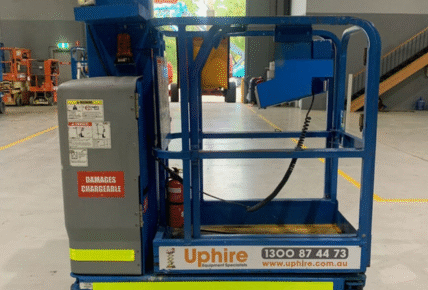When you first dive into the world of business valuation, it feels like everyone’s speaking another language. Acronyms fly across the table — EBITDA, SDE, DCF — and you’re left wondering if you accidentally walked into a math lecture. But behind all the fancy terms, these numbers tell a story. They help investors, buyers, and sellers see the real picture of what a business is worth.
Among those acronyms, two of the most important are SDE and EBITDA. They’re both used to measure profitability, but they look at that story from very different perspectives. Understanding how they differ can help business owners make smarter decisions — whether they’re running day-to-day operations or preparing to sell.
The Basics: What Do These Terms Actually Mean?
Let’s start with the simpler of the two: SDE, or Seller’s Discretionary Earnings. This metric is often used for small to mid-sized businesses, especially those where the owner is deeply involved in daily operations. It tells you how much income the owner actually takes home from the business — including salary, benefits, and perks.
Think of it as: if you were the new owner, how much money could you expect to earn by stepping into the current owner’s shoes? That’s SDE in a nutshell.
Now, EBITDA — Earnings Before Interest, Taxes, Depreciation, and Amortization — is a little more formal. It strips out non-operational expenses and focuses purely on how efficiently the business makes money from its operations. Investors love it because it offers a clean, apples-to-apples way to compare companies, no matter their size or capital structure.
So, sde vs ebitda really comes down to scale and perspective. SDE is personal — it’s about what the owner earns. EBITDA is impersonal — it’s about what the business earns.
How SDE Works in Real Life
Imagine a small family-owned café. The owner might pay themselves a salary, drive a company car, and occasionally write off meals as “business expenses.” Those perks and adjustments get added back into SDE because they’re part of the owner’s discretionary income — not essential costs to keep the café running.
That’s what makes SDE so valuable for small business transactions. It paints a realistic picture of the business’s earning potential for an individual operator, not a corporate investor.
If that café owner decided to sell, a buyer would use SDE to gauge how much income they could expect to generate if they ran the business themselves. It’s relatable, human, and grounded in the owner’s day-to-day life.
In contrast, if that café grew into a regional chain with multiple managers, EBITDA would become a better measure. The business is no longer about one person’s effort; it’s about systems, scalability, and performance independent of any one owner.
So, What Is SDE in Business Valuation?
Good question — and one worth slowing down for.
If you’ve ever asked, what is sde in business valuation, here’s the straightforward answer: it’s a metric used to calculate the total financial benefit a single owner-operator receives from their business in a given year.
That includes net profit, the owner’s salary, and any personal or discretionary expenses the business covers. These “add-backs” can include everything from car payments to travel expenses — basically, anything that a new owner might not necessarily keep paying themselves once they take over.
In small business sales, SDE is the go-to valuation metric. Brokers, buyers, and lenders often use a multiple of SDE — say, 2x or 3x — to estimate a company’s selling price. The more stable and profitable the earnings, the higher that multiple tends to be.
But here’s the key: SDE reflects a business that’s owner-dependent. If the owner leaves, the dynamic changes. That’s why buyers always ask how much of the revenue depends on the owner’s personal involvement — a question that can make or break a deal.
When EBITDA Steps In
EBITDA, on the other hand, is typically used for larger businesses — ones with management teams, structured processes, and less reliance on a single owner. It’s cleaner, more standardized, and more scalable.
It focuses on operating performance and ignores things like owner salary or financing decisions. That makes it easier for investors or acquirers to compare multiple companies across industries without getting lost in the weeds of how each one is structured.
For example, if two manufacturing firms each report $2 million in EBITDA, an investor can quickly gauge that they’re performing at a similar operational level, regardless of who’s running them or what their tax setup looks like.
The trade-off, though, is that EBITDA can feel cold. It’s numbers stripped of personality — perfect for private equity firms, not so much for small business owners who want to see how their effort translates into income.
The Overlap Between the Two
While SDE and EBITDA serve different audiences, they overlap more than you might think. Both aim to show the earning potential of a business — one for an individual owner, the other for an investor or buyer looking at operations.
The biggest difference is perspective. SDE asks, “How much could I earn if I owned and ran this business?” EBITDA asks, “How profitable is this business, regardless of who owns it?”
In practice, businesses often transition from using SDE to EBITDA as they grow. A $500,000 plumbing company run by a single owner might rely on SDE for valuation. But if it expands into multiple cities with regional managers and corporate clients, EBITDA becomes the more relevant measure.
It’s a natural evolution — one that reflects maturity, structure, and scalability.
Why Understanding Both Matters
Even if your business is small today, it’s worth understanding both metrics. Knowing your SDE helps you track personal income and position your company for sale. Knowing your EBITDA helps you think like an investor — focusing on systems, efficiency, and long-term value.
Let’s say you’re planning to sell in five years. Right now, you might focus on increasing SDE by cutting unnecessary expenses and boosting revenue. Over time, as you hire managers and reduce owner dependency, you shift toward growing EBITDA — building something that can thrive without you.
That’s how small businesses become valuable assets.
The Human Side of Valuation
Numbers can feel sterile, but they tell human stories. SDE reflects the owner’s sweat and sacrifice. EBITDA reflects the company’s independence. Both matter — they just serve different chapters in a business’s journey.
For owners, understanding SDE helps you see what you’re truly earning — not just what your accountant says. For buyers, it’s the key to understanding how much income the business will realistically provide once they step in.
And for those thinking long-term, knowing when to shift from SDE to EBITDA thinking is how you move from owning a job to owning a company.
The Bigger Picture
In the end, whether you’re calculating SDE or EBITDA, the goal is the same: clarity. You want to know what your business is worth — not just in dollars, but in potential.
An sde business might reflect one person’s hard work and passion. An EBITDA-based valuation might represent years of structure and growth. Both are valid. Both are valuable.





